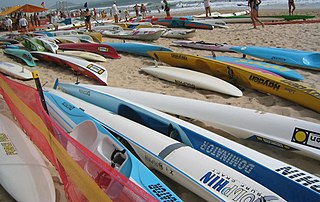
Surf lifesaving is a multifaceted social movement that comprises key aspects of voluntary lifeguard services and competitive surf sport. Originating in early 20th century Australia, the movement has expanded globally to other countries, including New Zealand, Ireland, South Africa, and the United Kingdom. Surf lifesavers in Australia are colloquially known as "Clubbies".
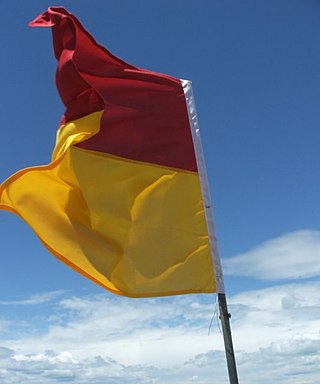
A lifeguard is a rescuer who supervises the safety and rescue of swimmers, surfers, and other water sports participants such as in a swimming pool, water park, beach, spa, river and lake. Lifeguards are trained in swimming and CPR/AED first aid, certified in water rescue using a variety of aids and equipment depending on requirements of their particular venue. In some areas, lifeguards are part of the emergency services system to incidents and in some communities, lifeguards may function as the primary EMS provider.

Bondi Beach is a popular beach and the name of the surrounding suburb in Sydney, New South Wales, Australia. Bondi Beach is located 7 kilometres east of the Sydney central business district, in the local government area of Waverley Council, in the Eastern Suburbs. It has a population of 11,656 residents. Its postcode is 2026. Bondi, North Bondi, and Bondi Junction are neighboring suburbs. Bondi Beach is one of the most visited tourist sites in Australia sparking two hit tv series Bondi Rescue and Bondi Vet.

Tamarama is a beachside suburb, eastern suburb of Sydney, in the state of New South Wales, Australia. Tamarama is 6 kilometres east of the Sydney central business district, in the local government area of Waverley Council.

Surf Life Saving New Zealand (SLSNZ) is the national association representing 74 Surf Life Saving Clubs in New Zealand. The organisation's motto is 'In it for Life'. This refers to both the long relationship many members have with the organisation, as well as to the organisation's purpose of preventing drowning and injury, thereby saving lives.

Inflatable Rescue Boats (IRBs) are rubber boats with an outboard motor used in surf lifesaving. IRBs have been used for all forms of surf rescue, retrieval, and service by Surf Lifesaving in New Zealand, Australia, and Del Mar, California since the late 1980s.
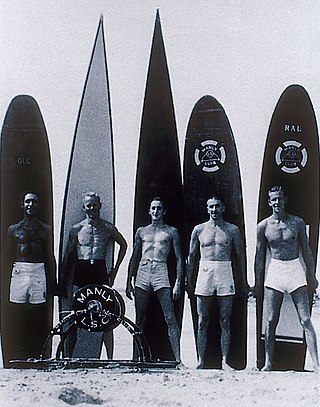
The Manly Life Saving Club is one of Australia's oldest Surf Life Saving Clubs, founded in 1911; located in the Sydney suburb of Manly, in the Northern Beaches Council in New South Wales.

Piha Surf Life Saving Club is a surf lifesaving club for the southern section of Piha, on the west coast of Auckland, New Zealand, some 45 km from the Auckland City centre. The patrol was featured in the TVNZ reality show Piha Rescue.

Surf Life Saving Australia (SLSA) is an Australian not-for-profit community organisation that promotes water safety and provides surf rescue services.

Bondi Rescue is an Australian factual television program which is broadcast on Network 10. The program follows the daily lives and routines of the Waverley Council professional lifeguards who patrol Bondi Beach.
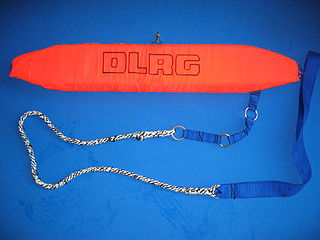
A rescue buoy or rescue tube or torpedo buoy is a piece of lifesaving equipment used in water rescue. This flotation device can help support the victim's and rescuer's weight to make a rescue easier. It is an essential part of the equipment that must be carried by lifeguards. It further can act as a mark of identification, identifying an individual as a lifeguard.
The Bronze Medallion, signifying a qualified lifesaver, has been a lifesaving standard award of The Royal Life Saving Society - Australia and Surf Life Saving Australia for over one hundred years. It was developed in England in 1892. It has evolved over the years to accommodate the environmental conditions of Australia.
John Chalmers, GC was a New Zealand-born Australian exchange recipient of the George Cross, the highest decoration for gallantry awarded to civilians or to military personnel for actions "not in the face of the enemy" in the United Kingdom and Commonwealth. A member of the North Bondi Surf Life Saving Club, Chalmers was awarded the Albert Medal in 1922 for his actions in rescuing a swimmer during a shark attack at Coogee Beach. With the establishment of the George Cross, the Albert Medal was discontinued and, in 1971, living recipients of the decoration were invited to exchange their medal for the George Cross; Chalmers took up the offer and formally became a recipient of the George Cross.
The club was founded in 1903 and the movement has since spread to other parts of New South Wales and the rest of the country. The club rests on indigenous land and whilst there is no clear evidence for the name or names of the Eora people who lived in what is now the Waverley area, most sources agree on the Cadigal, but some sources name the Biddigal and Birrabirragal bands as well.
National Water Life Saving Association (NWLSA), also known as Chinese Taipei Water Life Saving Association (CTWLSA), is the major lifesaving organization in Taiwan. The organization's members are mainly volunteer lifesavers, police officers, firefighters and civilians who are enthusiastic about water sports, water safety awareness and water rescue events.
The Bondi Surf Bathers' Life Saving Club is Australia's oldest Surf Life Saving Club, founded in 1907. The club was officially established on 21 February 1907 at the Royal Hotel in Bondi Beach, Sydney, New South Wales. The clubs aim is to ensure "No Lives Lost" at Bondi Beach and is a volunteer organisation that patrols Bondi Beach from October to April every year.
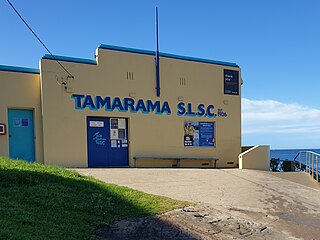
The Tamarama Surf Life Saving Club was founded in 1906 and operates at Tamarama Beach, Sydney. The clubhouse sits at the northern end of the beach.
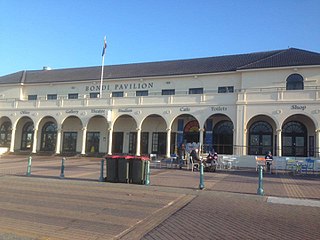
The Bondi Beach Cultural Landscape is a heritage-listed former Turkish baths, pavilion with dressing cubicles, dining rooms, sunbaking, shops and ballroom and now art gallery, pavilion, theatre and open air cinema located at Queen Elizabeth Drive, Bondi Beach, Waverley Municipality, Sydney, New South Wales, Australia. The pavilion was designed by Robertson and Marks, with Leith C. McCredie the architect. The Bondi Surf Life Savers' Club, erected c. 1934, was designed by Ross & Rowe. The Bondi Pavilion was designed by John Howie & Sons. The cultural landscape includes the beach itself, Bondi Surf Pavilion, Bondi Park and Bondi Surf Life Saving Club and the North Bondi Surf Club. The landscape was added to the New South Wales State Heritage Register on 23 May 2008.
The Freshwater Surf Life Saving Club, established in 1908, is located at Freshwater Beach in Australia. It has become a large volunteer organization with strong community bonds. The club was founded by a push from government to foster safer beach practices. It is a part of Surf Life Saving Australia, a not-for-profit organization committed to keeping the beach safe for patrons and providing beach rescue services. A visit to the club from United States' surfer, Duke Kahanamoku, in 1914 helped initiate the sport of surfing in Australia.













